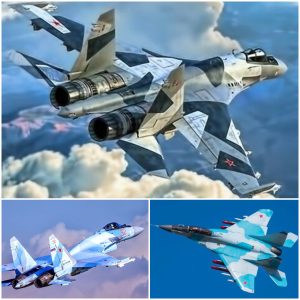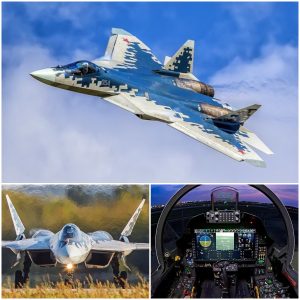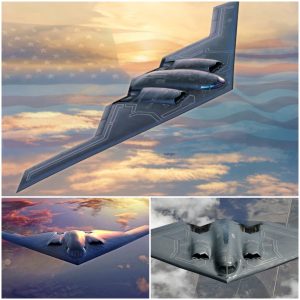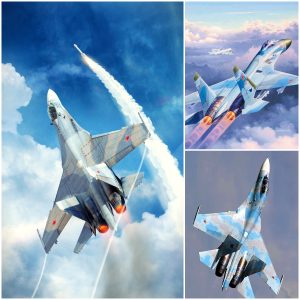
The B-58 Mach 2 bomber was Sexy, but Hard to Fly. Here’s why the Hustler was one of the most controversial designs in history of aviation.
Although the B-58 had its issues pilots and crews were in awe of it. Flying the Hustler was the pinnacle of a bomber pilot’s career.
The US Air Force’s first operational supersonic bomber, the B-58 made its initial flight on Nov. 11, 1956. In addition to the Hustler’s delta wing shape, distinctive features included a sophisticated inertial guidance navigation and bombing system, a slender “wasp-waist” fuselage and an extensive use of heat-resistant honeycomb sandwich skin panels in the wings and fuselage. Since the thin fuselage prevented the carrying of bombs internally, a droppable, two-component pod beneath the fuselage contained a nuclear weapon — along with extra fuel, reconnaissance equipment or other specialized gear. The B-58 crew consisted of a pilot, navigator/bombardier and defense systems operator.
Convair built 116 B-58s: 30 test and pre-production aircraft and 86 for operational service. Hustlers flew in the Strategic Air Command between 1960 and 1970. Setting 19 world speed and altitude records, B-58s also won five different aviation trophies.
However, despite its impressive features and achievements, the B-58 was the result of one of the most controversial designs in history of aviation.
‘The B-58 Hustler, the supersonic bomber of the early Cold War had an appalling accident rate, was a maintenance nightmare, terrible flight characteristics, and the basic mission was obsolete before the aircraft was fielded,’ said David Tussey former US Navy A-7 pilot on Quora. ‘I think over ~1/4 of the aircraft were lost in accidents. The Hustler was retired quickly from service serving less than a decade. The “bomb pod” — the combination centerline fuel tank + nuclear bomb dispenser — was a horror show. The plane looked sexy and was visually striking with that huge delta wing and four jet engines, but what a disaster.
‘One of my Navy colleagues’ father had flown the B-58 out of Carswell, I believe. He told us of one particular fuel transfer failure that the aircraft had, and that if this failure occurred during supersonic flight, it would result in trapped fuel that would shift the CG of the aircraft and make it uncontrollable when you slowed below supersonic flight.’
Tussey concludes;
‘So…if this emergency were to happen (and it did), you had two equally horrific choices — 1) eject while supersonic, which was likely to kill everyone, or 2) slow the aircraft to subsonic speed, allow the aircraft to go uncontrollable, and then eject—which was equally likely to kill everyone. ‘Unbelievable.’
But although the B-58 had its issues pilots and crews were in awe of it. Flying the B-58 was the pinnacle of a bomber pilot’s career. They were all volunteers, the best of the best, and wanted to fly nothing else.
Lt. Col Strank, former B-58 pilot sums up on B-58 Hustler website;
‘The delta wing made the aircraft handle differently than straight-wing aircraft, but the B-58 was firm, responsive, and was a joy to fly–although you were “flying” it even when you taxied. You had to pay attention to detail at all times, and you couldn’t really relax from the time you climbed on board until you parked and cut the engines.’

Photo credit: U.S. Air Force





